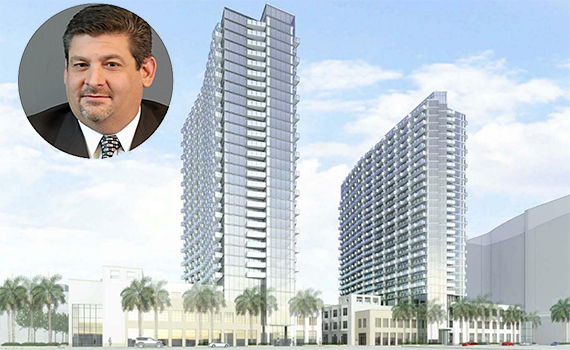With completion closing in for Midtown 5, the Magellan Development Group is launching plans to build two more rental towers in the burgeoning Midtown Miami neighborhood.
The developer has submitted applications for Midtown 6 and Midtown 7, a pair of 32-story modern towers that would together bring 838 apartments to the neighborhood if built.
Brian Gordon, Magellan’s executive vice president, told The Real Deal that the company has partnered with local landowner Alex Vadia to build the towers on the lots at 3001 and 3101 Northeast First Avenue.
For Midtown Six, Magellan wants to build 447 apartments and 39,718 square feet of retail space. Gordon said the development would cost between $100 million and $200 million. He also said Magellan has an institutional investor acting as an equity partner, but declined to name which firm.
To make Midtown 6 a reality, he said, the company needs its major use special plan to be approved by city officials, as well as clearing review hurdles at the planning and zoning board level. If all goes according to plan, Magellan could break ground by summer 2017.
The company is adopting a wait-and-see approach for Midtown 7 and its 391 units, however. Gordon said Magellan will measure interest in its Midtown 5 project, which is set to open either late this year or in early 2017, before launching the second of the two planned towers. The company would also seek construction financing for up to 65 percent of development cost, he said.
With Wharton Equity Partners and Mack Real Estate Group nearing completion of their Eve at the District apartment tower (formerly known as District 36), Wood Partners seeking approvals for a 28-story multifamily building in Midtown, and a host of other rentals cropping up in Greater Downtown Miami, Magellan is likely to face stiff competition in the next two years.
“It comes down to supply and demand,” he said. “Every year a certain number of units get gobbled up, and hopefully we’re in the range where there’s not oversupply.”
